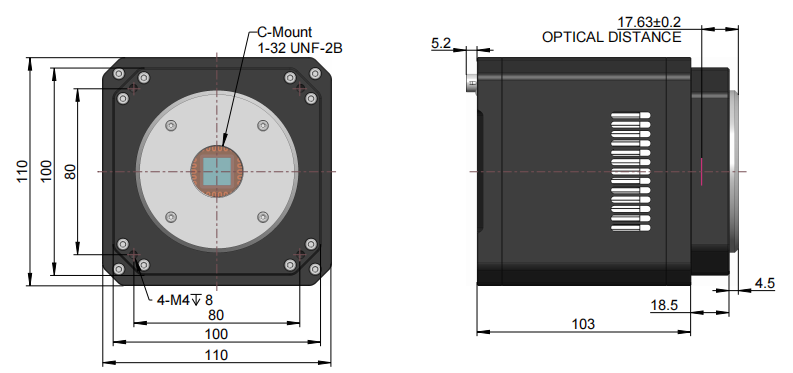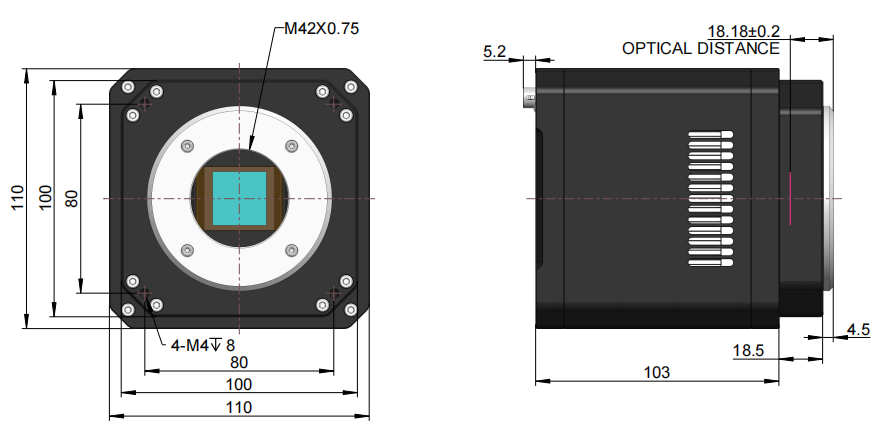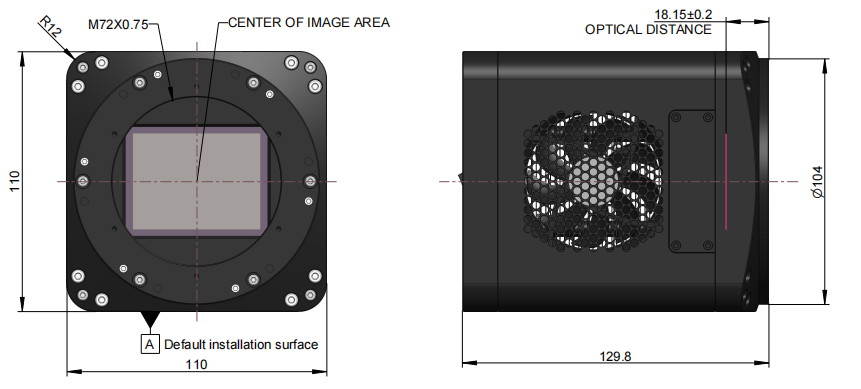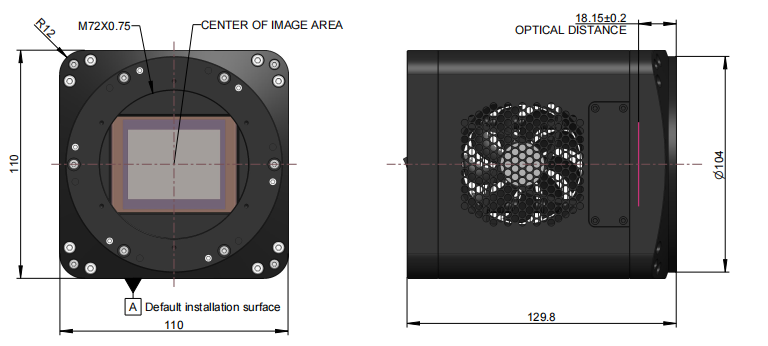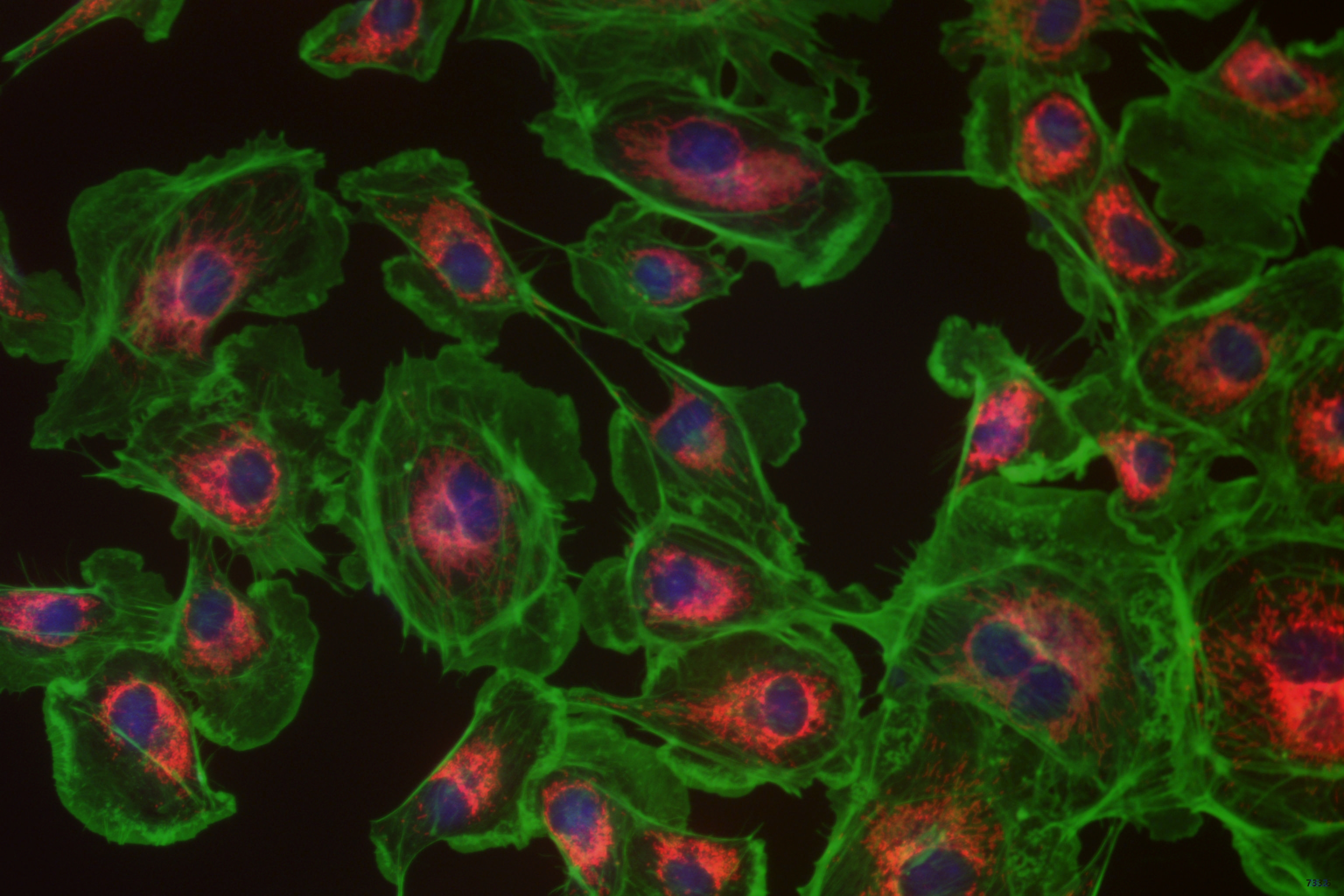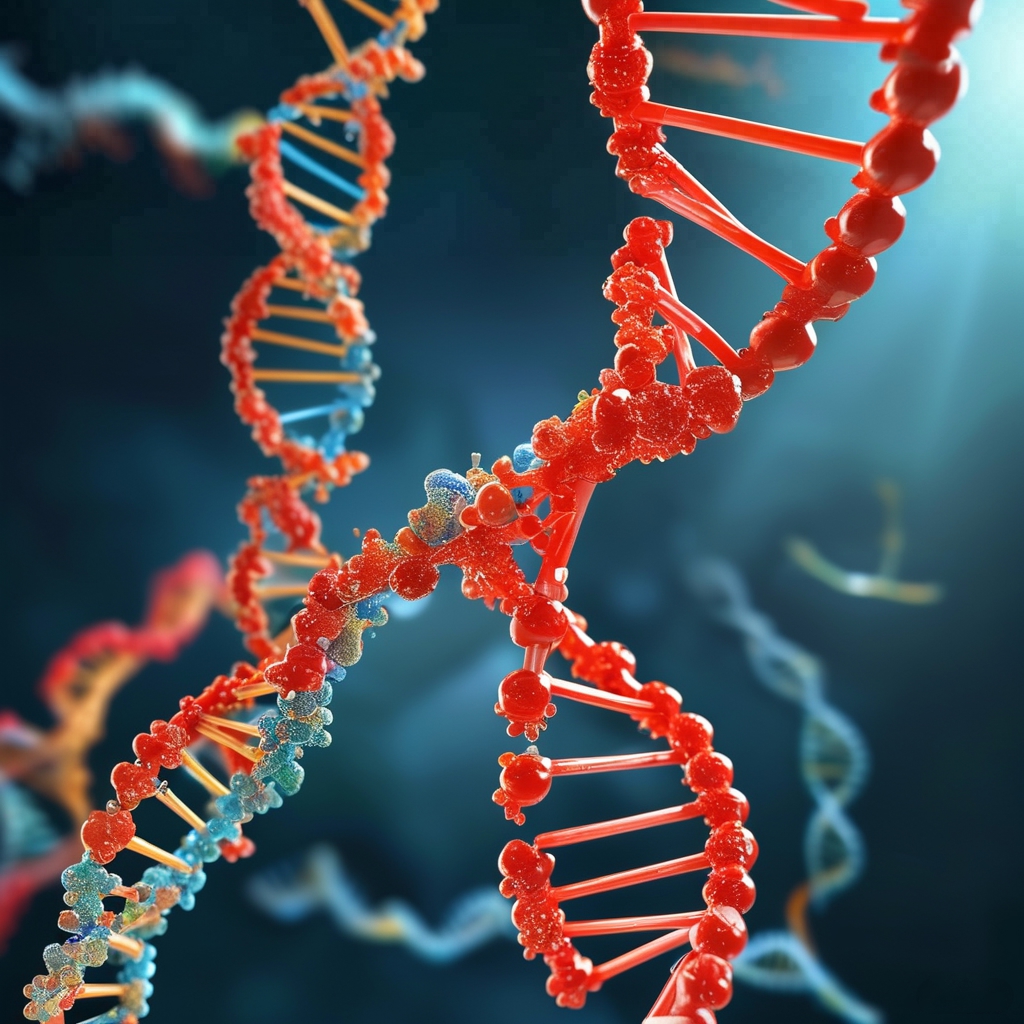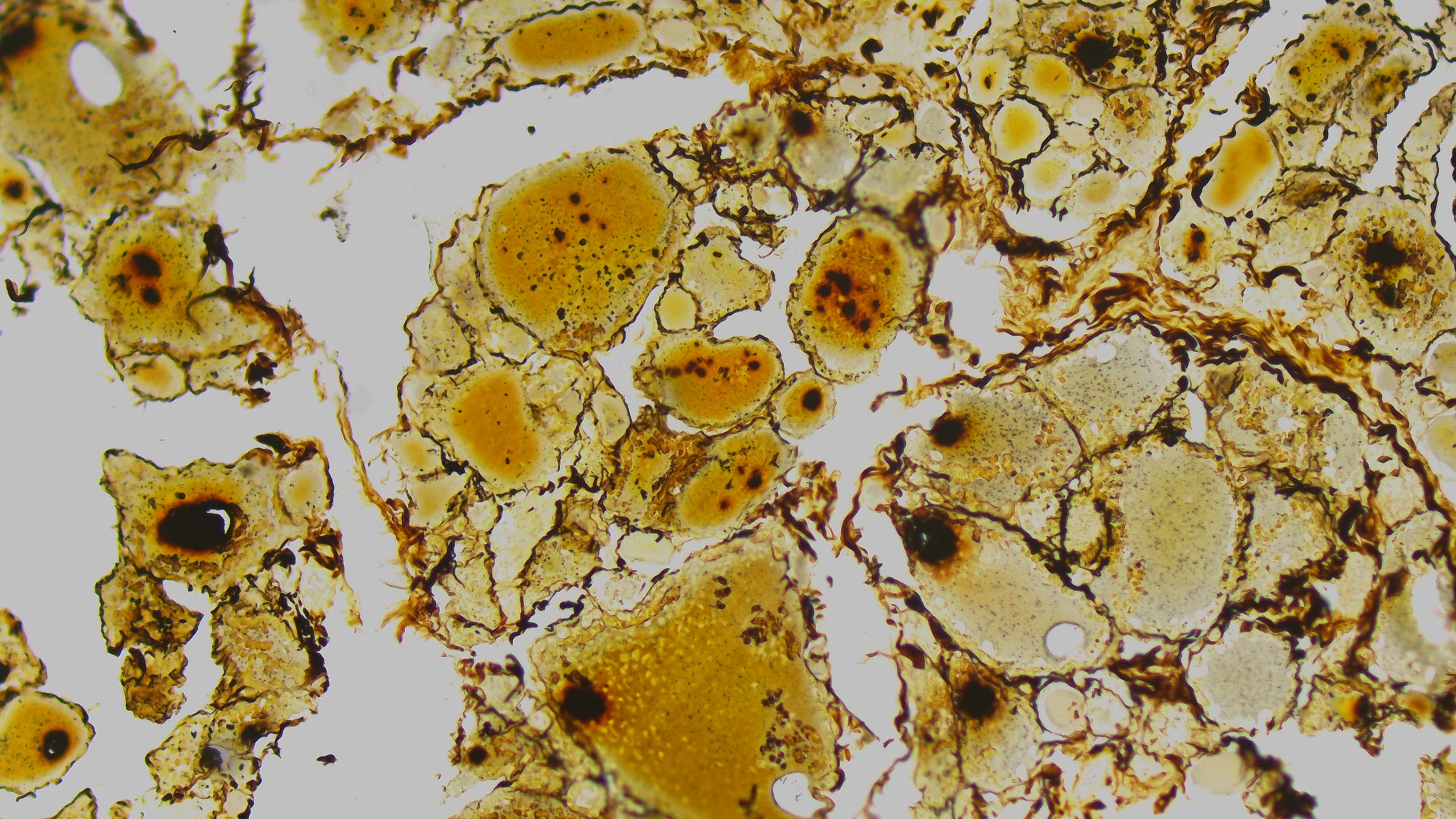MAX (GSENSE | High Frame Rate)
Product Introduction
Features Gpixel GSENSE series (GSENSE2020e/2020BSI/400BSI) large-pixel sCMOS sensors, 4.2 MP resolution with 6.5–11 µm pixels, balancing high full-well capacity and high quantum efficiency (BSI/UV-optimized process, model-dependent). Full-resolution 44–45 fps and HDR 16-bit output deliver wider dynamic range and superior tonal detail. The cameras integrate deep TEC cooling with anti-condensation structure, industrial-grade I/O, and ROI acceleration, suitable for fluorescence microscopy, spectral and UV imaging, low-light rapid experiments, and industrial inspection applications.
Product Features
- Pixel sizes 6.5–11 µm, balancing high full-well capacity and high quantum efficiency (model-dependent)
- Full-resolution 44–45 fps; supports ROI/cropping for increased frame rate (model-dependent)
- Output: 8-bit/HDR 16-bit; high dynamic range with rich tonal gradation
- USB3.0 high-speed link; built-in buffer for stable long-term acquisition (model-dependent)
- Deep TEC cooling (typical ΔT ≈ 40 °C) + anti-condensation structure, low dark current and stable black level
- Trigger & I/O: Opto-isolated input/output + GPIO; free-running/software/hardware trigger/multi-camera sync
- Image features: ROI, binning, image flip, etc. (model-dependent)
- Lens mount: C/M42/M52 (depending on sensor format and image circle), compatible with large image circle and UV/NIR applications
- Typical applications: Fluorescence microscopy, spectral and UV imaging, low-light rapid acquisition, industrial and scientific inspection
Product Models
Large-Pixel/Large-Format sCMOS (4.2 MP) | High Frame Rate, HDR 16-bit, Deep TEC Cooling, USB3 Scientific Camera
| Model | Sensor / Size | Resolution | Pixel Size | Shutter | Frame Rate | Interface | Dynamic Range |
Action |
|---|---|---|---|---|---|---|---|---|
| MAX04AM |
GSENSE2020e (M, NIR, RS)
1.18" (18.82 mm) | 13.31 mm × 13.31 mm
|
4.2 MP (2048×2048) | 6.5 µm × 6.5 µm | Rolling Shutter |
45 fps @ 2048×2048
45 fps @ 1024×1024
|
USB3.0 |
81.6 dB
|
View Details |
| MAX04BM |
GSENSE2020BSI (M, UV, RS)
1.18" (18.82 mm) | 13.31 mm × 13.31 mm
|
4.2 MP (2048×2048) | 6.5 µm × 6.5 µm | Rolling Shutter |
45 fps @ 2048×2048
45 fps @ 1024×1024
|
USB3.0 |
79.1 dB
|
View Details |
| MAX04CM |
GSENSE400BSI (M, UV, RS)
1.99" (31.86 mm) | 22.53 mm × 22.53 mm
|
4.2 MP (2048×2048) | 11 µm × 11 µm | Rolling Shutter |
44 fps @ 2048×2048
44 fps @ 1024×1024
|
USB3.0 |
93.9 dB
|
View Details |
Package Contents #
MAX-GSENSE series (USB3 / 10GigE · deep cooling) standard contents and packing info
Standard packing list
- Carton size: L: 50 cm W: 30 cm H: 30 cm (20 pcs, 12–17 kg/carton)
- 3-A instrument safety case: L: 28 cm W: 23.0 cm H: 15.5 cm (1 pc, 2.8 kg/box); outer carton: L: 28.2 cm W: 25.2 cm H: 16.7 cm
- MAX-GSENSE series camera (USB3)
- Power adapter: input AC 100~240 V 50/60 Hz; output DC 19 V 4 A
- High-speed USB3.0 A-to-B gold-plated cable (1.5 m)
- I/O cable
- CD (driver and software, Ø12 cm)
Standard packing list
- Carton size: L: 50 cm W: 30 cm H: 30 cm (20 pcs, 12–17 kg/carton)
- 3-A instrument safety case: L: 28 cm W: 23.0 cm H: 15.5 cm (1 pc, 2.8 kg/box); outer carton: L: 28.2 cm W: 25.2 cm H: 16.7 cm
- MAX-GSENSE series camera (10GigE)
- Power adapter: input AC 100~240 V 50/60 Hz; output DC 19 V 4 A
- 10GigE cable (Cat6A/7, shielded recommended)
- I/O cable
- CD (driver and software, Ø12 cm)
Product Dimensions #
MAX-GSENSE outline dimensions (USB3 / 10GigE · cooled)
Frequently Asked Questions
Learn more about scientific CMOS cameras
- Ultra-low read noise: sCMOS read noise approaches 1 e⁻, far outperforming traditional CCDs.
- High frame rate: Parallel readout architecture supports 100 fps or higher.
- Wide dynamic range: Captures bright and dark regions simultaneously with ratios up to tens of thousands to one.
- Large field of view and high resolution: Suits high-resolution, wide-field imaging.
EMCCD cameras excel in ultra-low light or long-exposure conditions.
sCMOS delivers greater value for high-resolution, high-speed imaging with low noise.
In-Depth Product Overview
sCMOS Sensor Architecture
Each pixel has its own amplifier and column ADC for parallel readout, enabling high-speed, high-SNR imaging. Dual gain channels and dual ADC designs further expand dynamic range and sensitivity.
Low Noise + Wide Dynamic Range
Typical sCMOS noise is < 2 e⁻ (30 fps) with dynamic range up to 50,000:1—far exceeding traditional CCDs.
Fast Readout & Versatility
Parallel readout supports >100 fps for capturing fast events such as cell motion, fluorescence lifetime studies, and plasma dynamics.
Low-Light Performance
Back-illuminated sCMOS sensors achieve >95% QE from UV to NIR, with low fixed-pattern noise and cooling down to −30 °C for astronomy and other needs.
Application Scenarios & System Value
Ideal for fluorescence microscopy, astronomy, cold atom research, X-ray imaging, materials inspection, and industrial microscopy—delivering high sensitivity, precision, and adaptability.
Key Application Areas
Representative sCMOS applications
sCMOS Technology Advantages Summary
- Ultra-low read noise (<2 e⁻)
- High frame rate (>100 fps)
- Wide dynamic range (50,000:1)
- High quantum efficiency (>95%)
- Large FOV, high resolution
- Cooling capability (−30 °C)
- Parallel readout architecture
- Adaptable to diverse research needs






